Recent Articles
Popular Makes
Body Types
2020 Ford Escape Hybrid Road Test and Review
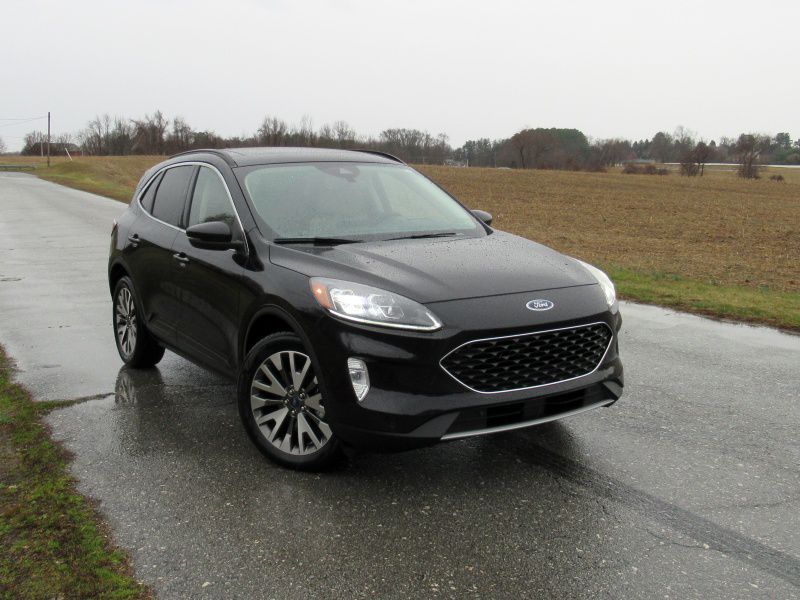
12020FordEscapeHybrid ・ Photo by Brady Holt
You may not remember it unless you owned one, but Ford introduced the world’s first gas-electric SUV with the 2005 Escape Hybrid. With an EPA rating of 33 miles per gallon at the time (or 29 mpg if measured by the agency’s current practices), it trounced the equivalent gas-only Escape by up to 10 mpg.
Now, after a seven-year hiatus, the Escape Hybrid is back. Ford fully redesigned the Escape compact crossover lineup for the 2020 model year, and a gas-electric powertrain has returned to the mix. Thanks to the latest hybrid technology, its fuel economy now soars past 40 mpg in EPA testing — once again, an advantage of around 10 mpg. Read on to learn more about how the 2020 Ford Escape Hybrid blends useful spaciousness with stellar fuel efficiency, and how it compares against its fellow small crossovers.
How It Works
The basics of hybrid technology haven’t changed since the 2005 Ford Escape: Electric motors help the gasoline engine power the vehicle, which reduces the amount of gas it needs. And when you don’t need a lot of power — like when you're coasting or accelerating gently — the electric motors can take over entirely, allowing the engine to shut off and burn no gas. The gasoline engine and friction from the brakes recharge the batteries while you drive. But in the last 15 years, gasoline engines and electric batteries have both improved greatly, to the 2020 Ford Escape Hybrid's benefit.
The result is EPA ratings of 44 mpg in city driving, 37 mpg on the highway, and 41 mpg overall in standard front-wheel-drive form, and 43 mpg city, 37 mpg highway, and 40 mpg overall with all-wheel-drive. That compares to 27 mpg city/33 mpg highway/30 mpg overall from the most-efficient gas-only Escape. During our five-day test of the AWD hybrid, we averaged 42 miles per gallon, and the trip computer told us that we covered nearly half our miles (44%) with the gasoline engine switched off.

Photo by Brady Holt
What It Costs
The 2020 Ford Escape Hybrid has a base price of $28,255. That’s a big jump from the base gas-only Escape, which starts at $24,855. However, the cheapest Escape Hybrid trim is the SE Sport, which has more standard features; the equivalent gas-powered Escape SE costs $27,095. Generous standard equipment includes a 10-way power driver’s seat, heated front seats, cloth upholstery, keyless entry with push-button starting, automatic climate control, and a suite of advanced safety features. AWD costs an extra $1,500, while a $3,000 package includes a panoramic sunroof, navigation system, power liftgate, and leatherette upholstery.
We tested the other Escape Hybrid trim: the loaded Titanium, which starts at $33,400 loaded with leather seats, a 10-speaker Bang & Olufson sound system, a hands-free power liftgate, a six-way power passenger seat, a heated steering wheel, adaptive cruise control, and a self-parking feature. Our test vehicle added a $2,000 package with the sunroof and a head-up display, along with AWD, pushing the total price to $37,990.
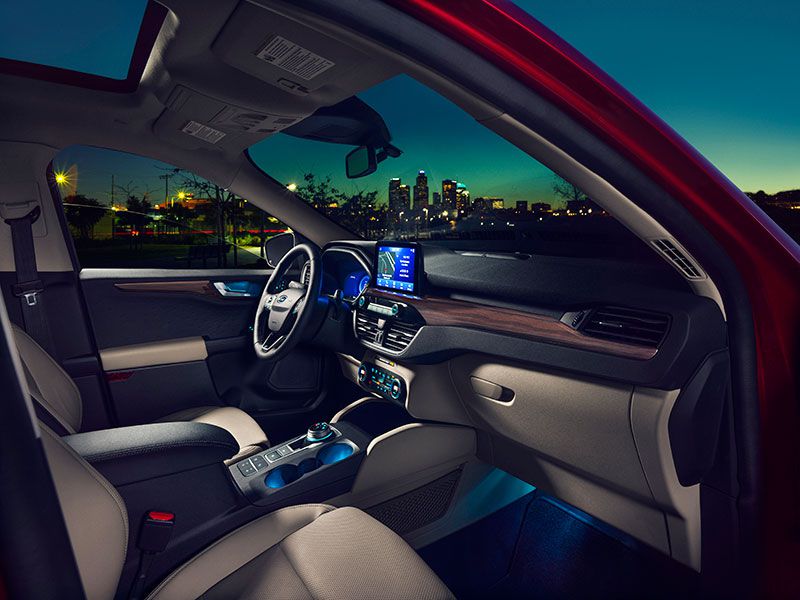
Photo by Ford
Car-Like Design
Of all the models in the large and greatly varied compact crossover class, we’d say the redesigned 2020 Ford Escape looks the most like a regular car. While some models try to look like tough SUVs and others try to look flashy or sporty, the Escape comes off more like a slightly taller Ford Focus hatchback. Its gently rounded body, gently rounded headlights and taillights, and forward-sloping rear windshield provide a slimming effect. Not everyone will be a fan, but it's perfect for folks who might find an SUV intimidating — such as Ford customers who prefer cars, given that the company has recently discontinued its Focus and Fiesta models.
The Ford Escape Hybrid is identical visually to the gas-powered Escape. Eagle-eyed passersby would need to spot one tiny “hybrid” badge on the rear liftgate to know that it’s an eco-friendly fuel-saver.
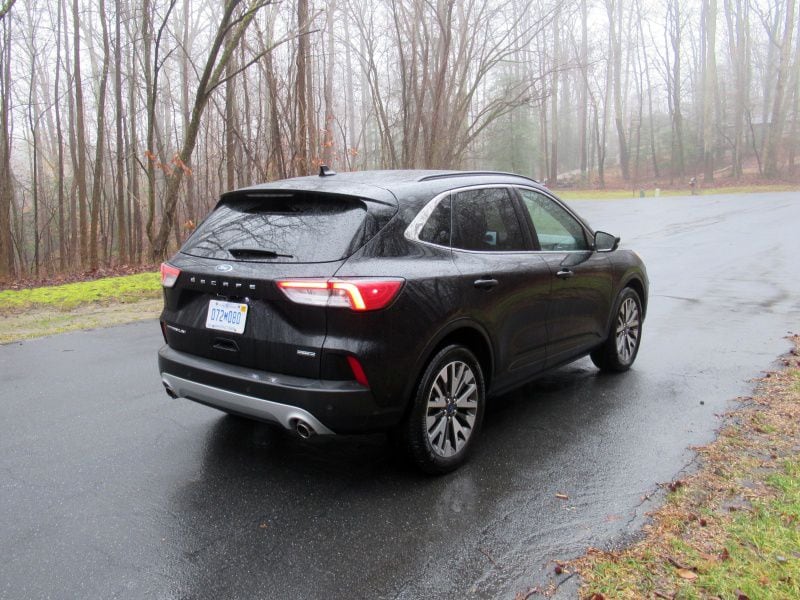
Photo by Brady Holt
High-Tech Cabin
The 2020 Ford Escape Hybrid boasts a high-tech cabin with two big, crisply rendered digital screens. One is a responsive 8-inch touchscreen on the dashboard, which perches above easy-to-use buttons and knobs on the instrument panel. The second screen is more unique at this price point: Instead of analog dials, the entire gauge cluster is a customizable 12.3-inch digital display, rendered in rich blue. It lets you choose what information you’d like to see most prominently and where, and it all flows more cohesively than the typical alternative: a small configurable screen between two fixed gauges.
The overall interior design is clean and modern, and the instrument panel flows nicely across to the passenger side of the vehicle, preventing a dull expanse of plastic. However, some parts of the Escape’s interior feel lower-grade than even similarly priced competitors. Hard, oddly textured plastic on the interior door panels is a particular weak point; we’d be surprised if Ford doesn’t redesign those panels within a couple of years.
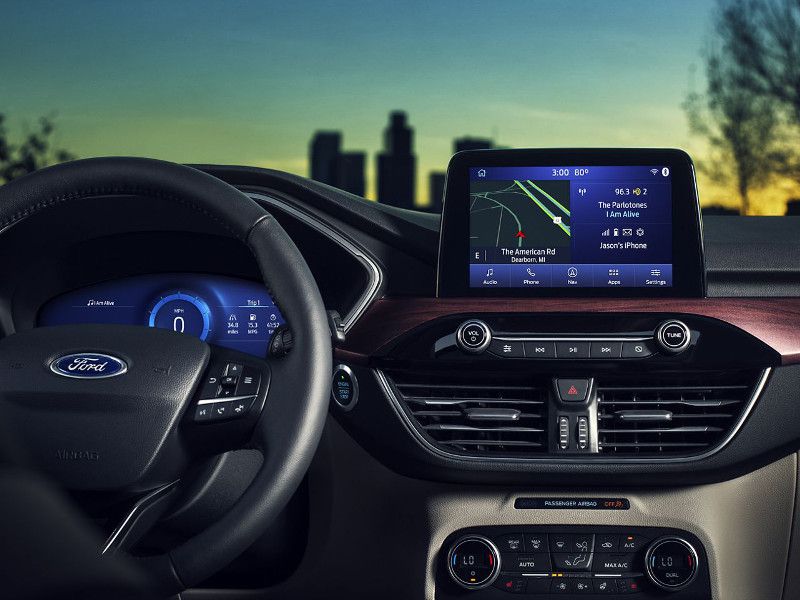
Photo by Ford
Decently Spacious
Like other crossovers this size, the 2020 Ford Escape Hybrid has spacious front seats that are mounted high enough for a good forward view, the cabin fits four adults comfortably and five in a pinch, and there’s a useful amount of cargo space. By the numbers, the latter includes up to 34 cubic feet of cargo space behind the rear seat and 61 cubic feet with the rear seat folded flat.
Though the Escape Hybrid is roomy enough for most folks, it’s on the small end for this segment. By comparison, the Toyota RAV4 Hybrid manages 38 cubic feet behind the rear seat and 70 cubic feet with the rear seat folded. Similarly, adults will have less stretch-out space in the Escape Hybrid’s backseat than they enjoy some other compact crossovers. The rear seat adjusts fore-aft to prioritize legroom or cargo space, but there isn’t much extra knee clearance even with the seat all the way back. If you love the Escape but want just a little more room, the gas-only model has a few inches more rear legroom and a few more cubic feet of cargo space than the hybrid.
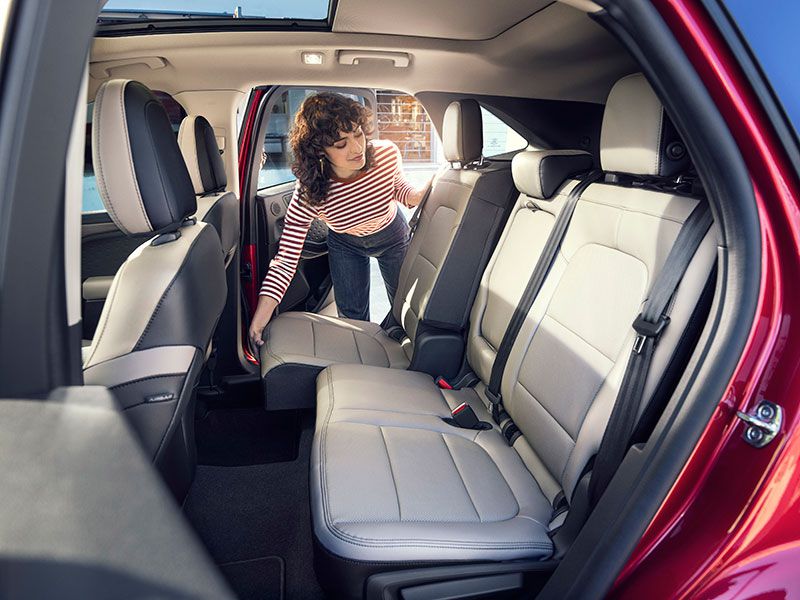
Photo by Ford
Pleasant Driving Experience
The 2020 Ford Escape Hybrid uses a 163-horsepower 2.5-liter four-cylinder gasoline engine along with its electric motors to provide a total 200 hp, which is respectable for a compact crossover. Put your foot to the floor and the vehicle is decently speedy, though the engine gets noisy compared to the standard Escape’s small-displacement turbos. The Escape is happiest when drivers are trying to maximize fuel efficiency, which can involve more time spent with the electric motors only.
The Escape rides smoothly, absorbing bumps with ease — like a car rather than a bouncy SUV. It’s easy to drive, with natural-feeling steering and composed handling, though it doesn’t have the sporty poise of a Mazda CX-5. Even the previous-generation Escape felt a bit livelier.
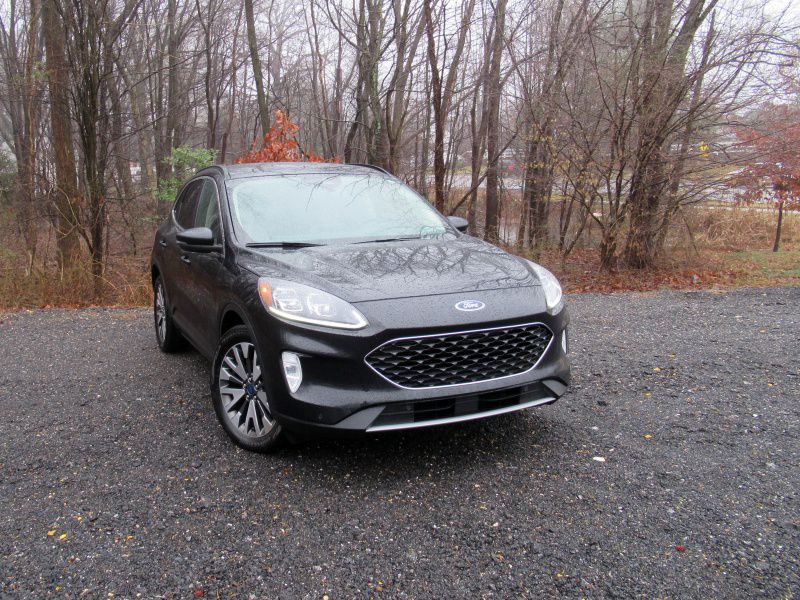
Photo by Brady Holt
Top Safety Pick
The 2020 Ford Escape earned a Top Safety Pick designation from the Insurance Institute for Highway Safety, reflecting the crossover’s strong performance in crash tests and its ability to help prevent accidents in the first place. (Safety ratings from the National Highway Traffic Safety Administration aren’t yet available as of this writing.)
The Escape Hybrid also stands out for its long list of standard safety technology, in a suite Ford calls Co-Pilot360. It includes a forward collision warning with automatic emergency braking, blind-spot monitoring with a rear cross-traffic alert, a lane-departure warning with steering corrections, and automatic headlights. Adaptive cruise control is available as an extra-cost option on the SE Sport and comes standard on the Titanium. Titanium-exclusive features include collision-avoiding automatic steering and more advanced lane-centering steering assistance.
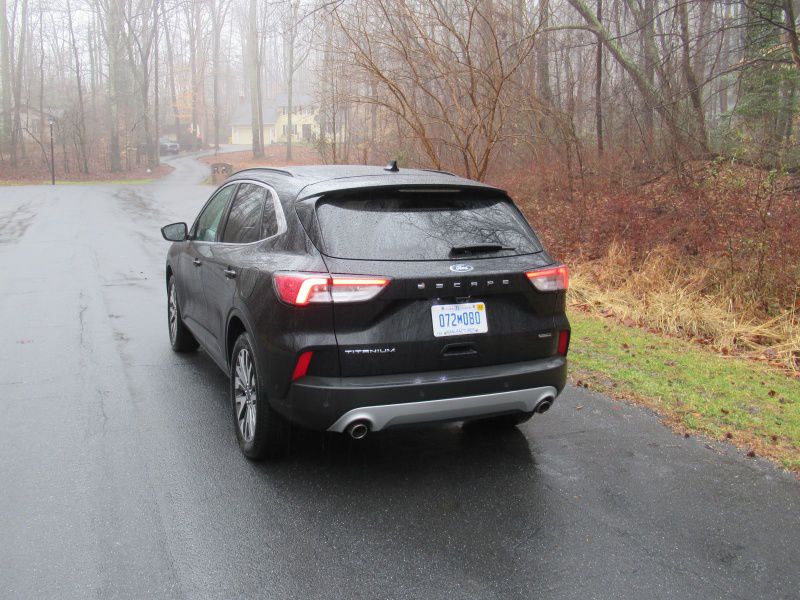
Photo by Brady Holt
Escape Hybrid vs. the Competition
The Escape Hybrid’s closest competitor is the 2020 Toyota RAV4 Hybrid, America’s best-selling gas-electric vehicle. It starts at $28,350, within a few dollars of the Escape Hybrid, and its 40-mpg overall EPA rating is also nearly identical to the Ford’s (the RAV4 gets better highway ratings but the Escape gets better city scores). The RAV4 has a more rugged SUV-like design than the Escape, along with a roomier interior. And although our tests weren’t scientifically precise like the EPA’s, we observed 46 mpg in the RAV4 versus 42 mpg in the Escape. However, the Ford brings a higher-tech interior and nimbler handling.
Another competitor is coming later this year: the first-ever Honda CR-V Hybrid. We don’t have pricing and fuel economy details on the new 2020 CR-V Hybrid, but other CR-Vs are roomy and agile. The Escape’s cabin tech should still be slicker, though. Otherwise, the Escape Hybrid competes against fuel-efficient gas-only vehicles like the standard RAV4, CR-V, and Subaru Forester, and the Escape itself. Especially if most of your driving is on open highways — rather than in stop-and-go conditions where hybrids truly stand out — a hybrid’s fuel savings might prove minimal.
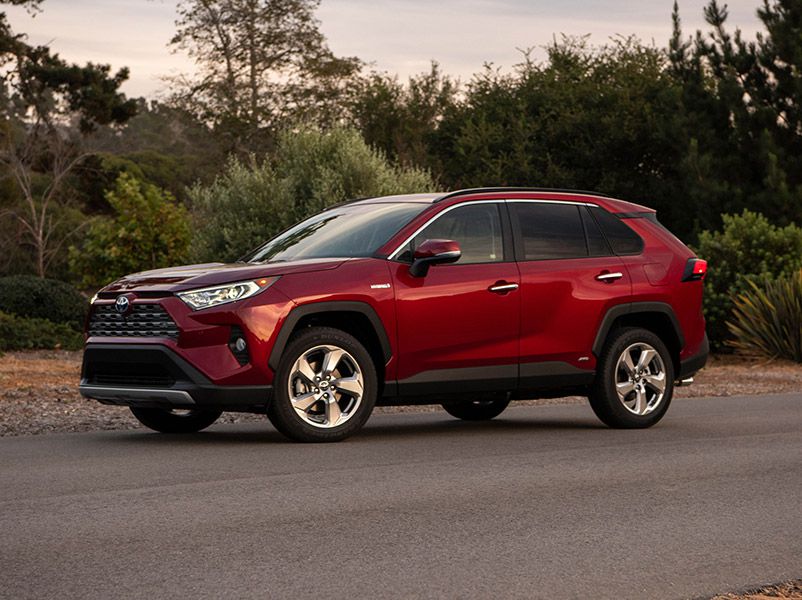
Photo by Toyota
Functional Fuel-Sipper
The all-new 2020 Ford Escape Hybrid brings a gas-electric hybrid powertrain to a pleasant-driving, decently functional compact crossover package. It gives you a high seating position, usefully roomy interior, the all-weather security of optional AWD, and outstanding fuel efficiency.
The Escape Hybrid isn’t perfect. We wish it had nicer interior materials and a little more room inside, and some SUV buyers would prefer if it looked less like a car. But there are few ways to get such great gas mileage in a relatively practical and affordable vehicle. If you’re interested in a compact crossover and want to minimize your fuel usage, be sure to check it out.
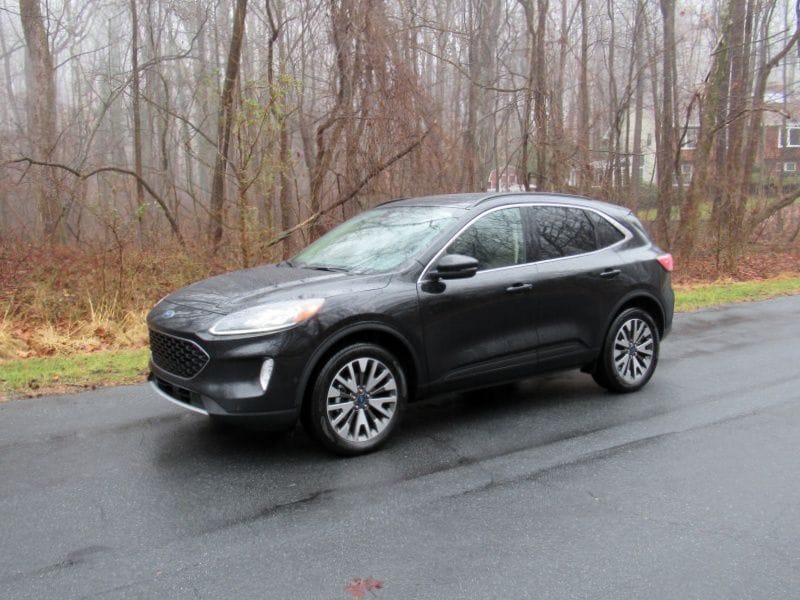
Photo by Brady Holt